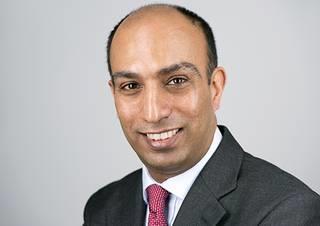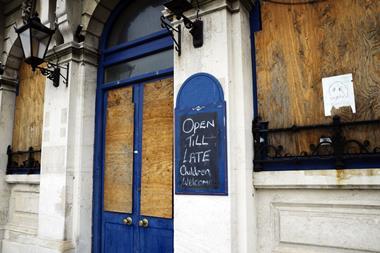The insurer’s chief executive explains how rate increases are flagging behind jumped-up claims inflation
Jon Dye, chief executive at Allianz Insurance, told Insurance Times that a prolonged soft market has meant that the insurer’s commercial property prices have not been able to keep pace with escalating claims inflation, particularly across fire, theft and escape of water (EOW) claims.
Speaking to trade press this morning at Allianz’s Gracechurch Street office, Dye said: “What is not a great story is what’s happened in commercial property where we had an unusually high number of large claims and increases in fire, theft and escape of water.
“What we can see is that the market has been too cheap for too long, so a prolonged soft market is indeed what we have seen and that means that prices haven’t kept up with inflation.
“[While] in the last six months, we can see that that is starting to move. We ourselves have been pushing for rate and we’ve achieved it, which would tell me that the rest of the market is in a similar place. It’s going to take some time to get that back to where we would like it to be.”
Allianz’s liability account, on the other hand, had “a stunning year” according to Dye. “Our casualty book performed very nicely, but not enough to offset the problems that we were seeing in commercial property,” he added.
Dye shared these insights upon the publication of Allianz’s full-year results this morning.
Addressing challenges
For Dye, improving profitability in Allianz’s commercial property portfolio will not be a ‘one and done’ activity.
“The critical thing for me is we need to get the right levels of rate through those elements of our commercial business which have been suffering,” he explained.
“Mostly that’s attaching to the property lines, so we have seen a really good level of improvement over the last six months as we can see month on month that the rate we’ve been able to achieve in those lines has been increasing. But we’ve got to keep working at that.
“The commercial property area has seen some competitors actually quit in 2019. Now, we’re definitely not quitting, but we absolutely need to make sure that we get the right price on these property risks and clearly the weather we’ve seen over the last few weeks is going to underline that.
“What we do need to do is make sure that our risk selection is good, that we’re charging adequate prices.
”That’s always true for every line of business clearly, but particularly important where you have an element of your portfolio which is underperforming, and that is definitely true of our commercial property account in 2019.
”We need to make sure we are getting our underwriting and our pricing absolutely in the right place to restore that account to the right level of profitability.
“If you looked at it risk by risk, we don’t think we’ve got an underwriting problem.
”We don’t believe that we’ve got a bunch of risks on the books that we should never have touched for whatever reason because of the nature of the risk that they posed. I would still see this as more of a price problem than a risk selection problem.”
Broker relationships
Between 2017 and 2018, the total impact of increasing frequency and cost of claims within commercial property has risen by 9% for fire claims, skyrocketed by 13% for theft claims and escalated by 10% for EOW claims.
This information is published in fact sheets provided by Allianz to its broker partners – Dye said that if the insurer is asking for more rate, it understands that this means brokers will need to talk to their clients about potential price increases.
”The fact sheets, therefore, aim to explain to brokers what is driving claims inflation across different lines of business, so that this can then be explained to end customers.
In commercial property, for example, Allianz cited issues around building materials, labour, contents and stock, business interruption and natural catastrophes as impacting claims inflation.
“It’s not a straightforward and simple picture, but it’s a picture which clearly we are seeking to understand and make sure that it’s properly reflected in our pricing.
”The purpose of these materials is to work with our brokers to help them to have the conversation with their customers,” Dye said.
Acquisition trail
Furthermore, broker relationships have been vital throughout Allianz’s recent acquisition trail. This included moving Allianz’s car and home divisions over to LV= in June 2018; four months later, the process to move LV=’s commercial business to Allianz begun.
”The joint venture activities with LV= have now concluded, as at 2019’s Q4, and the process is due to start again with Legal and General.
Dye continued: “All of that depends on the support of the brokers because in the end, brokers own the customers and if the brokers want to recommend to their customers that they should transfer their commercial business from LV= to Allianz, that clearly is going to be decisive.”
Dye further emphasised that he is “very confident” about the next round of business integration, describing it as a “repeatable process” after the success of the LV= transfers. However, “the expanded organisation is a relatively new thing, so we need to make sure that’s all working properly,” he added.
Purchasing the general insurance arms of both LV= and Legal and General gives Allianz around 12m customers and 8,800 employees, making it the second largest general insurer in the UK by premium.
Hosted by comedian and actor Tom Allen, 34 Gold, 23 Silver and 22 Bronze awards were handed out across an amazing 34 categories recognising brilliance and innovation right across the breadth of UK general insurance.





















































No comments yet